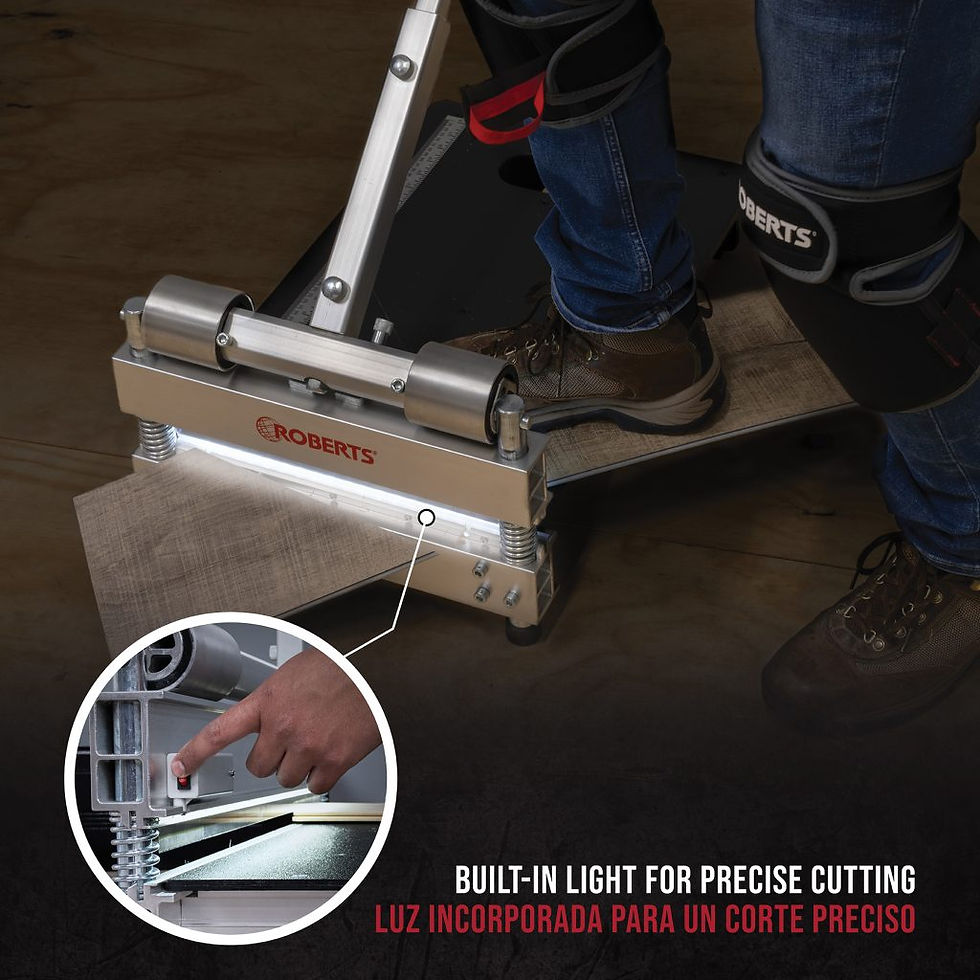HYBRID FLOORING INSTALLATION GUIDE
Are you ready to transform your space with stunning hybrid flooring? In this comprehensive guide, we'll walk you through the process step-by-step, ensuring you achieve a professional finish with confidence.
Hybrid Flooring is a great choice for those looking for a low maintenance & durable floating floor. However, it's important to keep in mind that heavy objects like island benches and cabinetry should not be installed on floating floors. Instead, the flooring should be cut and installed around these objects. We recommend ordering 10% extra flooring to cover installation cuts, fitments, and wastage. Also, please note that Hybrid Flooring comes with pre-attached underlay, so there's no need to install any further underlay during installation.
Step 1: Preparation is Key
Before diving into the installation process, ensure you have the following material and tools ready:
Materials & Tools Needed:
-
Hybrid Flooring Planks
-
Measuring Tape
-
Spacers
-
Mitre Saw
-
Table Saw
-
Utility Knife
-
White Mallet
-
Tapping Block
-
Pulling Bar
-
Straight Edge
-
Multi-tool
-
Vacuum
-
Cleaning Supplies
-
Optional: Roberts Pro Floor Cutter
Step 2: Prepare the Subfloor
To ensure the proper installation of flooring, the subfloor must be completely even, dry, clean, and solid. Any carpet staples or glue residue must be removed, and the floor must be thoroughly cleaned. At Imperial Flooring Australia, we prioritise the quality of our installations, so it is essential to prepare the subfloor properly to achieve the best results. This means ensuring that there are no uneven surfaces or debris that could affect the new flooring. By taking the time to prepare the subfloor correctly, you can help guarantee the longevity and appearance of your new flooring. Check the subfloor flatness before proceeding with any installation: Using minimum a 2 metre straight edge. Any floor uneven must be rectified to manufacturer's subfloor flatness tolerance guidelines with floor self levelling compounds, floor grinding or floor sanding.
Step 3: Undercut Door Frames
Trim door frames by turning a panel upside down as a height measurement and using a multi-tool cutter to cut away the necessary height so that panels can slide easily underneath for a clean finish.
Step 4: Measure and Plan
Carefully measure the room to determine where to start laying the flooring. Consider the layout and ensure you plan for a balanced look. Remember, precision is key to a professional finish!
Step 5: Begin Installation
Start by laying the first row of hybrid planks along the longest wall, ensuring to leave space for expansion. Use spacers to maintain a consistent gap between the flooring and the wall. As you progress, engage the interlocking mechanisms securely for a tight fit. Start the next row with the offcut piece from the previous row to stagger the pattern. The board piece should be minimum 20cm long with a joint offset of at least 40cm. To attach the panels, tilt the panel slightly upwards to about a 15-25° when lowered the plank, it will then click into place with light pressure. Ensure that any gaps are as small as possible. Continue locking each panel into place, ensuring a straight and tight fit beginning with the long side first and then tapping the short side into place. Always use a rubber mallet and tapping block instead of striking the floor directly, which could damage the locking system.
Step 6: Cut and Fit
When reaching the end of a row, measure and cut the planks accordingly to fit. To fit the last row, place a panel on top of the previous row. With the tongue to the wall, place another panel upside down on the one to be measured and use it as a ruler. Do not forget to allow room for expansion. Cut the panel and tap it into place with the pull bar. A mitre saw or utility knife will come in handy for these adjustments. Remember to stagger the joints for added stability and aesthetics.
Step 7: Finalise and Inspect
Once all the planks are laid, use a tapping block and hammer to ensure they are snugly fit together. Inspect the entire installation for any gaps or issues, correcting them promptly.
Step 8: Add Finishing Touches
Carefully install transition trims, undercut door frames if needed, and add skirting boards for a polished look. These final touches will elevate the appearance and ensure a seamless transition between rooms.
Step 9: Maintain Your Hybrid Flooring
Congratulations on successfully installing your hybrid flooring like a pro! To keep your new floors looking pristine, regularly clean them with a manufacturer-approved cleaner. Avoid harsh chemicals and excessive moisture to preserve the flooring's integrity.
In Conclusion
By following this detailed guide, you've mastered the art of installing hybrid flooring with finesse and skill. Now, enjoy the beauty and durability of your new floors, knowing you tackled the installation like a true professional!
Whether you're revamping your office space or upgrading a client's home, installing hybrid flooring is a rewarding project that enhances any environment. Embrace the process with confidence, and let your expertise shine through in every meticulous detail.
Embrace the Transformation – Install Hybrid Flooring Like a Pro!
















































